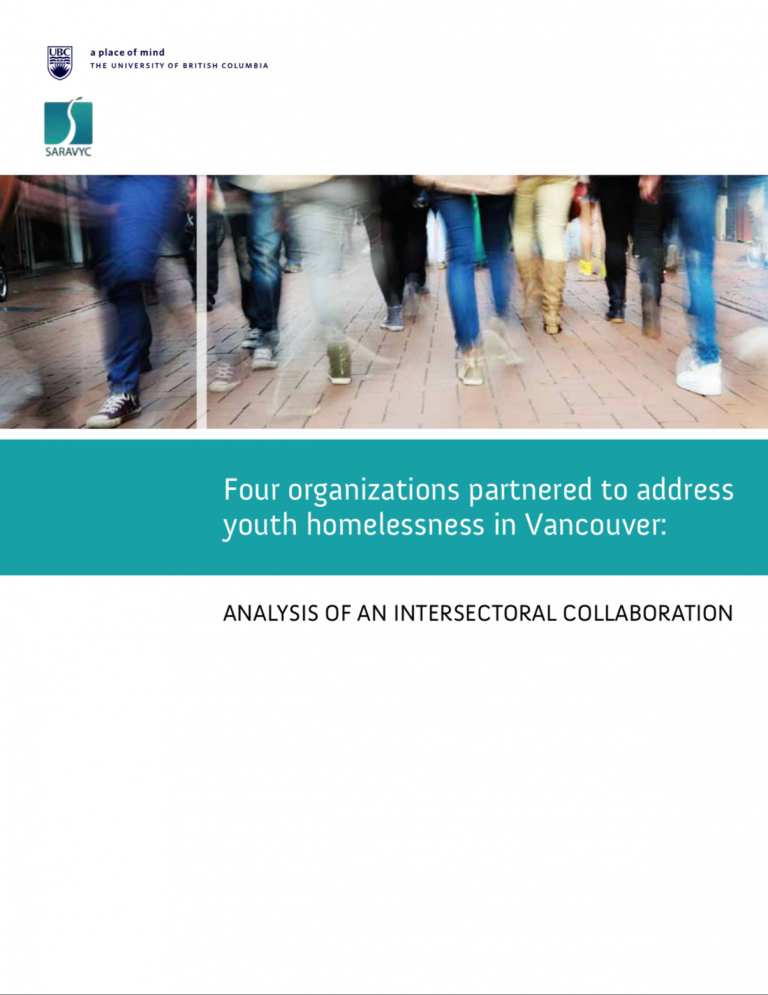In the mid-2000’s, health care and social service providers in Vancouver witnessed street-involved youth with undiagnosed and/or under-treated mental illnesses repeatedly entering their services in a state of chaos and crisis. They had no means of intervening with youth through the housing and mental health systems. In an attempt to break this cycle and fill the gaps in services for street-involved youth with mental illness, four organizations from different sectors partnered to collaborate on a solution. These four organizations (Inner City Youth Program at St. Paul’s Hospital, Covenant House Vancouver, Coast Mental Health and BC Housing) created an innovative and effective service delivery platform to meet the needs of street- involved youth with mental illness.
To learn more about what made this collaboration successful, we conducted an institutional ethnography. We interviewed 22 service providers from the collaborating organizations and 7 youth who had used at least two of the collaborating services. We also reviewed over 300 documents from the four organizations (e-mails, meeting minutes, Memoranda of Understanding, annual reports, etc.). From this we identified several keys to building successful intersectoral collaboration for organizations focusing on addressing youth mental health and homelessness, many of which are supported in the research literature on intersectoral collaboration generally.
Click here to see this report on the Homeless Hub.


